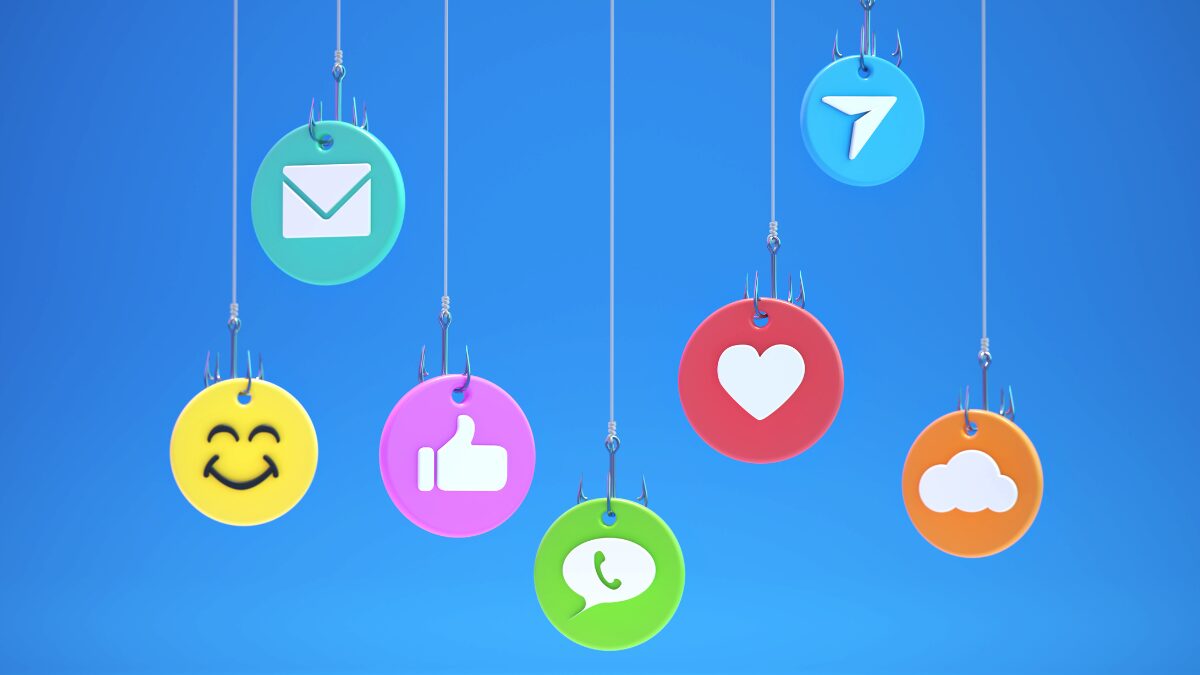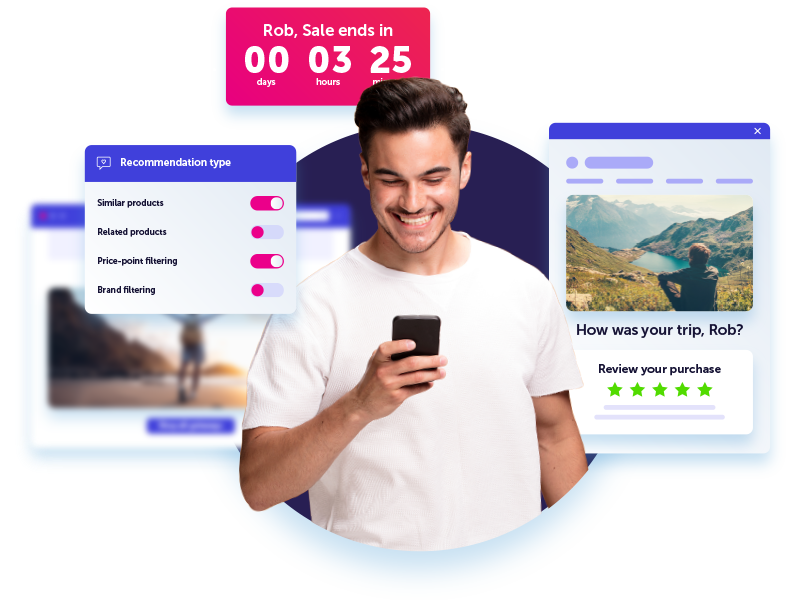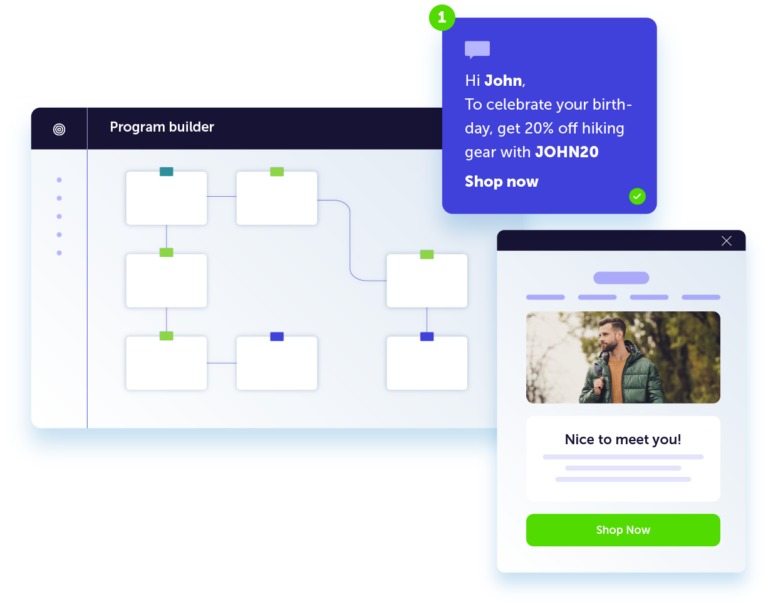Cross-channel marketing: a beginner’s guide

73% of shoppers expect brands to understand their specific needs and wants. Connecting with your customers across multiple platforms today is no longer optional; it’s an necessity.
Cross-channel marketing allows you to come up with effective and engaging ways to communicate your message that’s easy for your audience to understand and relate to, irrespective of where they come in contact with your brand.
In this guide, you’ll learn the basics of cross-channel marketing, see how it differs from other marketing approaches, and understand the next steps to begin driving results with your current campaigns.
What is cross-channel marketing?
At its core, cross-channel marketing is the practice of using multiple marketing channels together, guiding customers through a cohesive journey. The goal is simple: create a consistent experience, so that every interaction feels connected, whether a customer clicks on an email, sees a social ad, or engages with your website.

Think of it as an orchestra, where each channel has its part to play, but when they work together, the result is far more powerful than any single channel on its own.
How does cross-channel marketing differ from single-, multi-, and omni-channel?
Many marketers get confused between these terms, so let’s break them down:
Single-channel marketing:
You focus on one channel only like email or social. All campaigns happen here, with no coordination across other channels.
Multi-channel marketing:
You use multiple channels (email, social, ads), but they often operate in silos. Messages may vary or overlap, but there’s no real integration.
Omni-channel marketing:
Like multi-channel, but with a strong emphasis on seamless customer experience across devices and touchpoints, often supported by real-time data.
Cross-channel marketing:
The sweet spot. Channels work together in a coordinated, planned way, so customers can move naturally between them. Your email might nudge them to your website, which then triggers a personalized SMS, all aligned with the same messaging and goal.
Why cross-channel marketing matters today
Customers interact with brands in more ways than ever yet only 23% say marketing feels truly relevant.
So, cross-channel marketing addresses this by:
- Boosting engagement: Coordinated messages keep your brand top-of-mind across touchpoints
- Improving ROI: Integrated campaigns outperform siloed campaigns because every interaction builds on the last
- Enhancing personalization: Cross-channel strategies make it easier to tailor content based on past interactions and preferences
Benefits of cross-channel marketing
A cross-channel marketing strategy offers more than just reaching more customers. Here’s some of those benefits:
1. Personalized customer experiences
Cross-channel marketing lets you tailor experiences based on behavior and preferences across multiple platforms. By using this data, you can deliver content and campaigns that feel relevant to each customer leading to increased engagement and higher conversion rates.

2. Boost brand visibility
Reaching customers through email, social media, SMS, and other channels keeps your brand visible where your audience spends their time. A strong presence across these platforms increases the chances of your message being seen and engaged with, helping grow your awareness and reach.
3. Consistent messaging
A coordinated cross-channel strategy ensures your messaging feels seamless across all touchpoints. This consistency tends to build trust and credibility, making customers more confident when engaging with your brand. It also reinforces your brand identity, making it more memorable and helping your audience clearly understand your unique value.
4. Improved campaign performance
Platforms like Dotdigital make it easier to bring together data from different channels. By analyzing insights across email, SMS, social, and more, you can see what works best for your audience and refine your campaigns.
5. Enhanced customer loyalty
Delivering consistent, personalized experiences strengthens customer loyalty. Loyal customers tend to buy more often and are more likely to recommend your brand to others. Over time, this advocacy increases your reach and drives growth, while boosting customer lifetime value.
Core channels and how to use them together
Here’s a quick breakdown of the channels most commonly used in cross-channel campaigns and how they can complement each other:
- Email: Ideal for nurture campaigns, product updates, or promotions
- SMS / push notifications: Great for timely alerts, reminders, or flash offers
- Social media: Helps with discovery, brand awareness, and engagement
- Paid ads: Retargeting or prospecting audiences with consistent messaging
- Website / app: Where conversions often happen, perfect for reinforcing other channels
Helpful tip:
The key is to map the customer journey and decide which channel makes sense at each stage. For example, an abandoned cart email might be followed by an SMS reminder and a retargeting ad, all telling a consistent story.
How to create an effective cross-channel marketing strategy
Building a cross-channel marketing strategy doesn’t have to feel overwhelming. So, the key is to start with a clear picture of your audience, then connect the dots between data, content, and timing. Here’s how to do it step by step.
1. Get to know your audience
Start by understanding who you’re talking to and what they care about. Dive into your customer data to look at things like:
- Behavior
- Purchase history
- Engagement patterns
- Preferences
You can use this insight to segment your audience into meaningful groups, such as loyal customers, new sign-ups, or lapsed buyers. When you know what motivates each group, you can create experiences that feel personal and relevant from the start.
2. Map the customer journey
Next, chart out the moments that matter, from first discovery through to purchase and beyond. Identify the touchpoints across each channel and think about how they connect. For example, someone might see a social ad, visit your website, join your mailing list, then receive a welcome email.

Mapping the journey helps you spot gaps, align messaging, and ensure that every touchpoint works together to move your customers forward.
3. Choose the right channels for each stage
Not every message belongs on every channel. Use your journey map to decide which channels are most effective at each stage. For example:
- Email is great for nurturing
- SMS for reminders or offers
- Social for awareness
- Paid ads for retargeting
The goal is to build a mix that meets your audience where they are, without overwhelming them.
4. Create consistent, connected messaging
Customers notice when messages feel disjointed. Keep your tone, visuals, and value proposition aligned across every channel. Each interaction should reinforce the last, creating a sense of continuity and trust.
5. Coordinate your timing and triggers
Automation is your best friend here. Set up triggers based on behavior. For example, a website browse could prompt a follow-up email, or an abandoned cart could trigger an SMS reminder. This ensures your messages are both timely and relevant.
6. Test, measure, and refine
No strategy is static. Review your data regularly to see what’s working and what’s not. Test different subject lines, timing, and channel combinations. Use the results to optimize your future campaigns and scale what performs best.
Technology, data, and compliance
Cross-channel marketing relies on good data and the right tools. So, you’ll want to consider:
- Customer data platforms or CRM systems: These help unify data across channels and provide a single view of each customer
- Marketing automation: Enables personalized campaigns across email, SMS, and push
- Analytics tools: Measure engagement, attribution, and ROI
Don’t forget about data privacy and compliance. Customers need to trust how you collect, store, and use their data. Being transparent with your communication builds trust and boosts engagement.
How to measure success
Tracking the right metrics is going to be so helpful here. So, here’s some KPIs we recommend you track for your cross-channel campaigns:
- Engagement metrics: Open rates, click-through rates, app opens, social likes/shares
- Conversion metrics: Purchases, sign-ups, downloads
- Customer journey metrics: Cross-channel attribution, path-to-purchase insights
- Retention metrics: Repeat purchases, churn rates, loyalty program activity
Common challenges and how to solve them
Cross-channel marketing is powerful, but it’s not without challenges, such as:
- Siloed data: Ensure all channels feed into a central system
- Channel conflict: Avoid bombarding customers with overlapping messages
- Budget and resources: Prioritize high-impact channels and campaigns first
- Measurement complexity: Use attribution models and dashboards to see the bigger picture
With planning, testing, and the right tools, these obstacles are manageable
Beyond the basics
Once you’ve mastered the fundamentals, you’ll want to consider more advanced tactics like:
- Predictive analytics: Anticipate customer needs across channels
- Dynamic content: Personalize messages in real-time based on behavior
- AI-powered recommendations: Suggest products or content where it will have the biggest impact
These steps take cross-channel marketing from “good” to “great,” creating experiences your customers remember and again, the results are worth it.
Wrapping it up
Cross-channel marketing lets you meet customers where they are, create consistent experiences, and boost engagement across every interaction. Start small, map your customer journey, coordinate your channels, and test relentlessly.
FAQs about cross-channel marketing
Q: What’s the difference between omni-channel and cross-channel marketing?
Omni-channel focuses on a seamless experience across devices, while cross-channel emphasizes coordinated campaigns across multiple channels.
Q: Can small businesses benefit from cross-channel marketing?
Absolutely. Even simple cross-channel campaigns, like combining email and SMS, can significantly boost engagement and ROI.
Q: How often should I review and update my cross-channel strategy?
Regularly, ideally monthly for campaigns and quarterly for strategy, using data to inform improvements.



